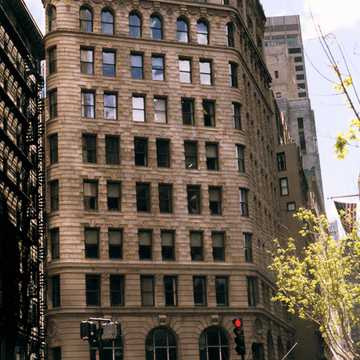On the site of the first meetinghouse from 1629 to 1640, the Brazer Building is an excellent example of conservative steel-frame skyscraper design and the only Boston commission of New York architect Cass Gilbert, best known for the Woolworth Building in lower Manhattan. Columnar in shape, bent to its irregular site and clad in limestone and terra-cotta, the Brazer Building represents the limitations of Boston height restrictions at the end of the nineteenth century and the importance of the intersection of State and Congress streets as the heart of Boston's financial center. The animated rustication of the facades rise to a sculptural treatment of the upper levels, the total composition more fanciful than most of the commercial buildings of its generation.
You are here
Second Brazer Building
If SAH Archipedia has been useful to you, please consider supporting it.
SAH Archipedia tells the story of the United States through its buildings, landscapes, and cities. This freely available resource empowers the public with authoritative knowledge that deepens their understanding and appreciation of the built environment. But the Society of Architectural Historians, which created SAH Archipedia with University of Virginia Press, needs your support to maintain the high-caliber research, writing, photography, cartography, editing, design, and programming that make SAH Archipedia a trusted online resource available to all who value the history of place, heritage tourism, and learning.











